
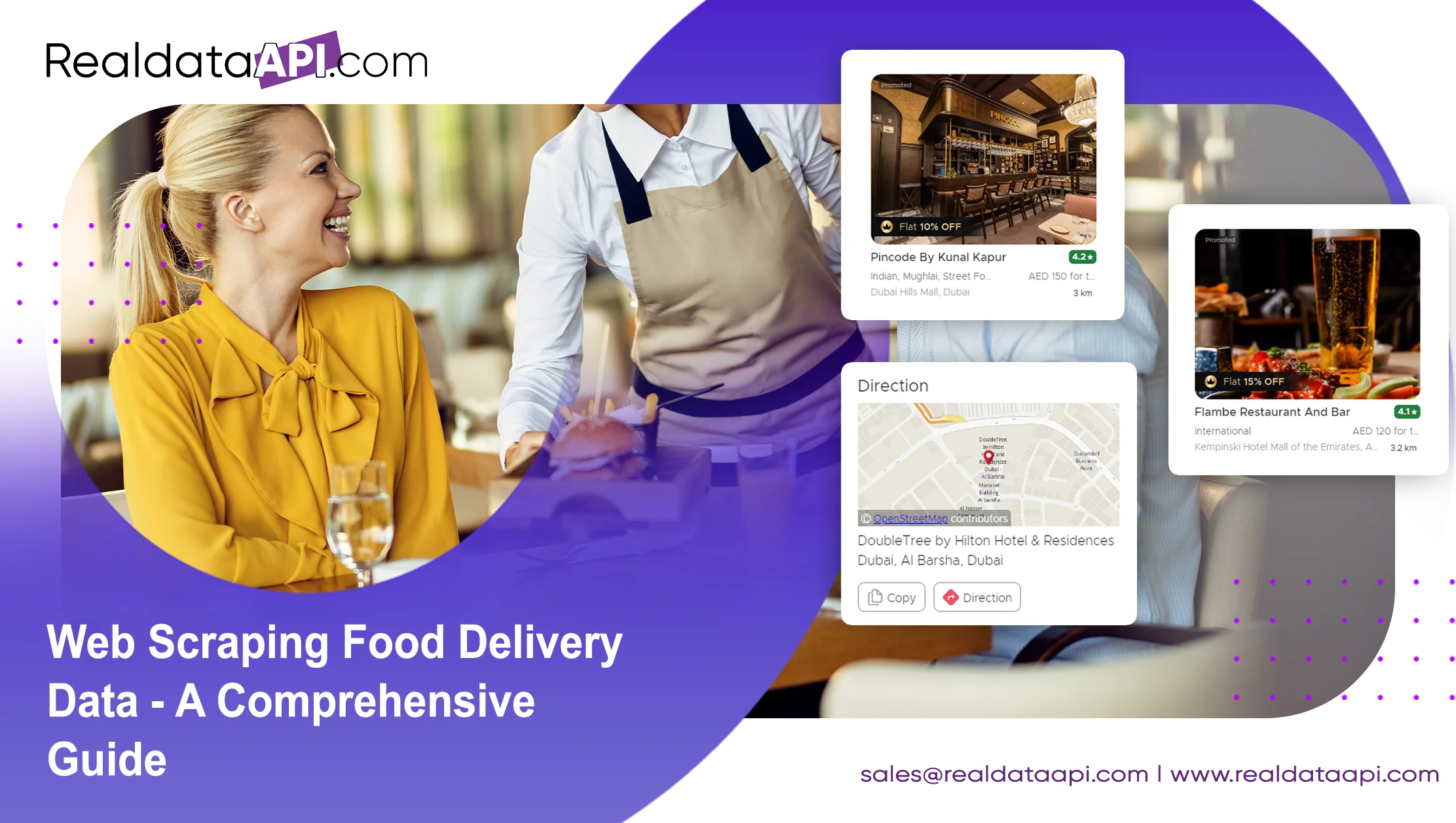
Introduction
In the digital era, food delivery services have revolutionized how we dine and how businesses operate. Whether you're a startup venturing into the food delivery market, a data analyst conducting competitive research, or a developer building a price comparison tool, scraping food delivery data is essential. This guide explores the process, tools, and techniques for web scraping food delivery data, enabling efficient data extraction to drive business success.
Introduction to Web Scraping Food Delivery Data
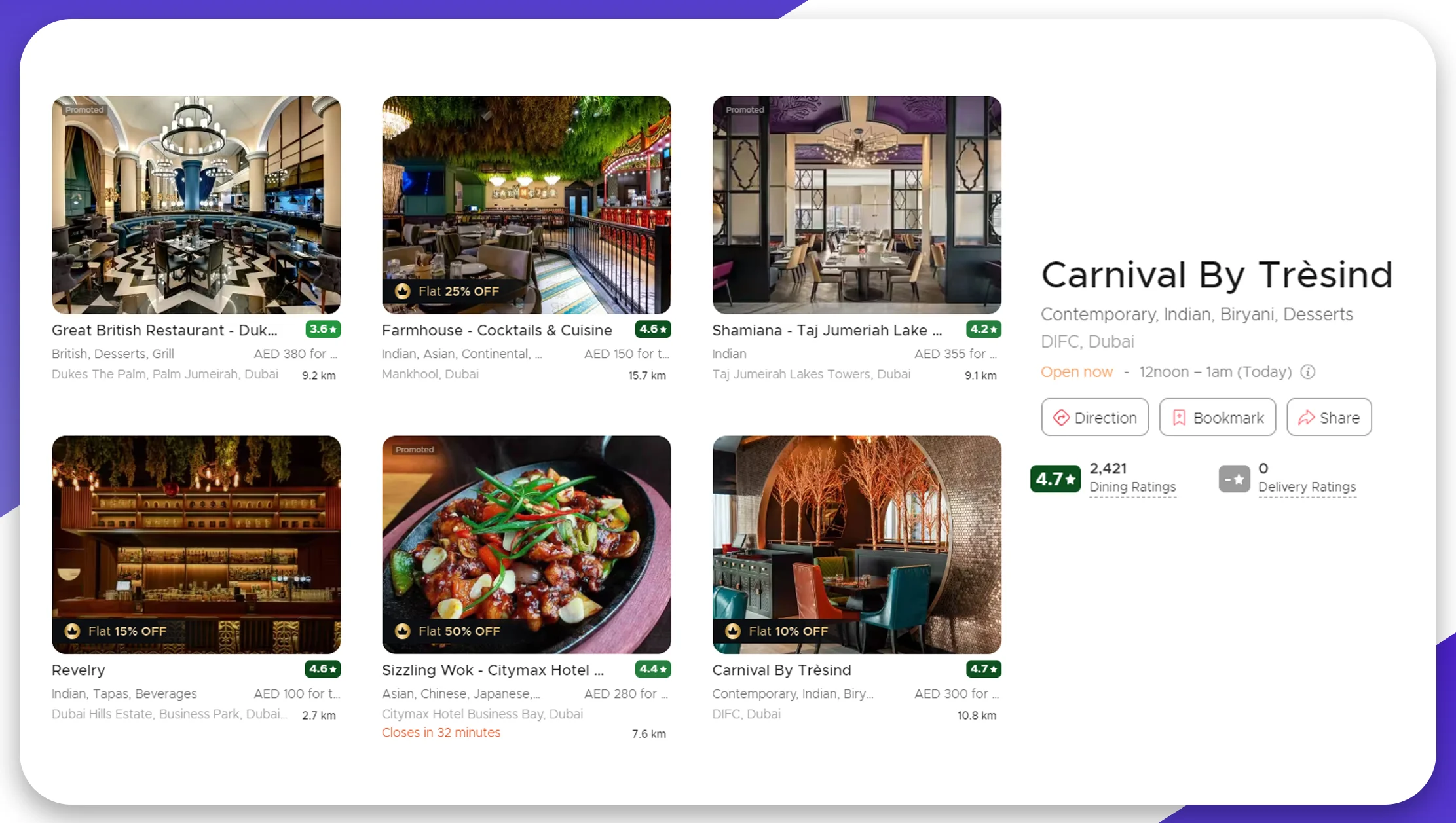
The food delivery industry has witnessed rapid expansion, making food delivery data extraction a valuable resource for understanding market trends, customer preferences, and competition. Web scraping food delivery data allows businesses to collect crucial insights from food delivery platforms, helping them make informed decisions.
A food delivery data scraper is a specialized tool that extracts structured information from platforms, gathering essential data such as menu items, prices, restaurant ratings, delivery times, and customer reviews. The food delivery data collection process involves sending HTTP requests, parsing web pages, and extracting relevant elements for further analysis.
One of the key benefits of food delivery data scraping is its application in competitive analysis and price comparison. Businesses can monitor rival pricing, identify gaps, and refine their strategies accordingly. Additionally, real-time data extraction provides instant insights into the fast-paced food delivery market.
Utilizing web scraping services for scraping food delivery data helps businesses track trends, analyze customer preferences, and make data-driven decisions. By leveraging this information, companies can optimize operations, refine marketing strategies, and stay ahead of the competition.
Why Scrape Food Delivery Data?
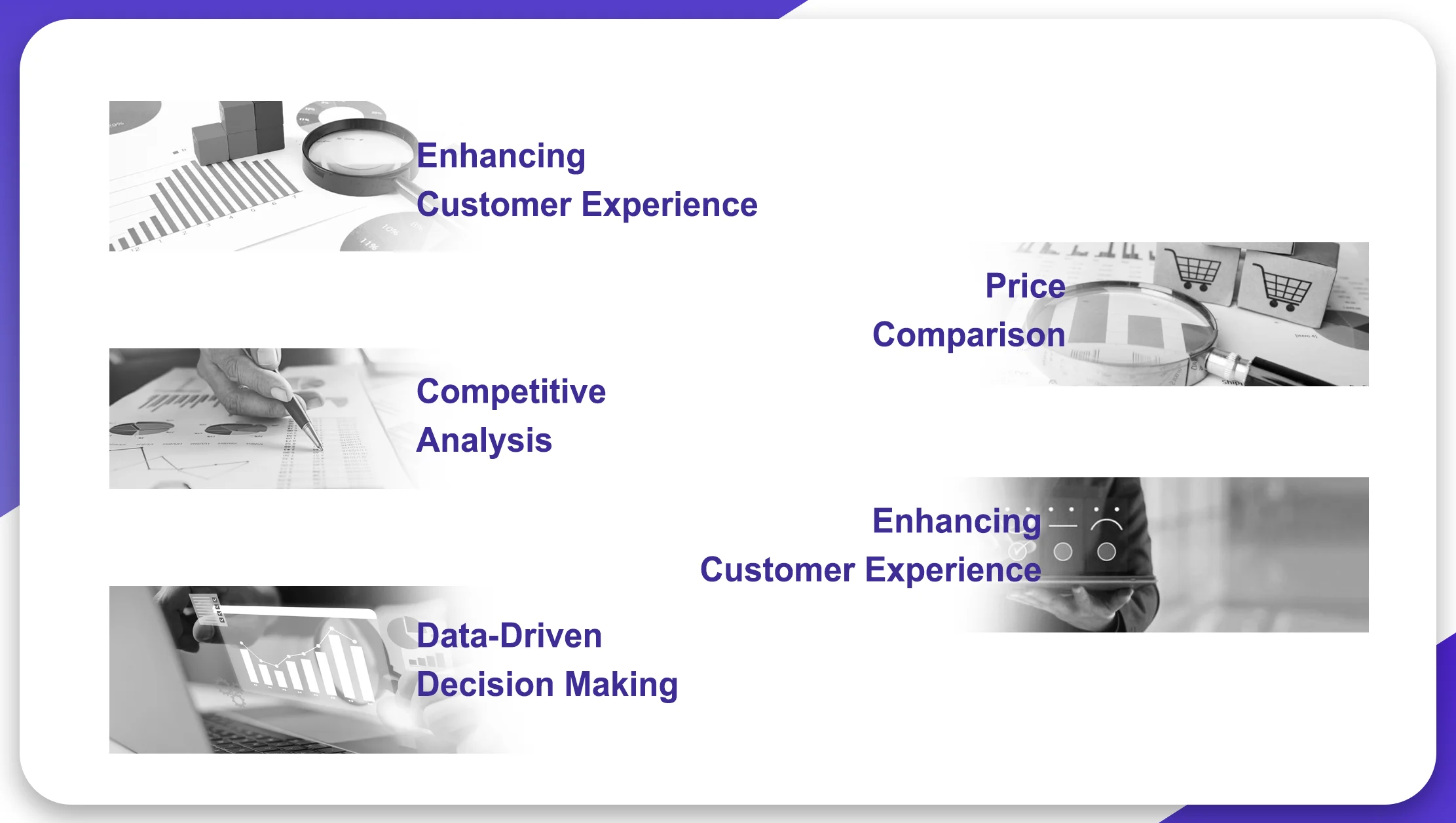
Access to real-time food delivery data is crucial for businesses looking to remain competitive and make informed decisions. Web scraping food delivery data offers numerous benefits, enhancing strategy, efficiency, and customer experience.
Market Research
Conducting detailed market research helps businesses understand emerging trends, popular cuisines, and customer demands. Scraping food delivery data allows companies to gather information on ordering patterns, peak delivery times, and consumer demographics. This valuable insight helps businesses refine their offerings and stay ahead in the competitive food delivery landscape.
Price Comparison
Monitoring competitor pricing is essential in the food delivery market. Using a food delivery data scraper, businesses can extract pricing data from multiple platforms, enabling price comparison and competitive pricing adjustments. This process ensures that companies attract more customers by offering competitive pricing and promotions.
Competitive Analysis
Understanding competitors’ menus, delivery speeds, promotions, and customer feedback is essential for market positioning. With Web scraping services, businesses can analyze competitor strategies, identify service gaps, and enhance their offerings. By using food delivery data extraction, companies gain a clear edge in their market.
Enhancing Customer Experience
Real-time food delivery data extraction allows businesses to improve their services. Instant data scrapers provide insights into delivery times, logistics efficiency, and customer satisfaction. Additionally, businesses can analyze customer reviews to pinpoint areas for improvement, ultimately boosting customer retention and satisfaction.
Data-Driven Decision Making
In a data-driven economy, accurate and real-time data fuels strategic decisions. Scraping food delivery data helps businesses make informed choices about marketing, product development, and operational improvements. Accessing structured, real-time food delivery data ensures companies stay agile, optimize services, and maximize profits.
Getting Started with Food Delivery Data Scraping
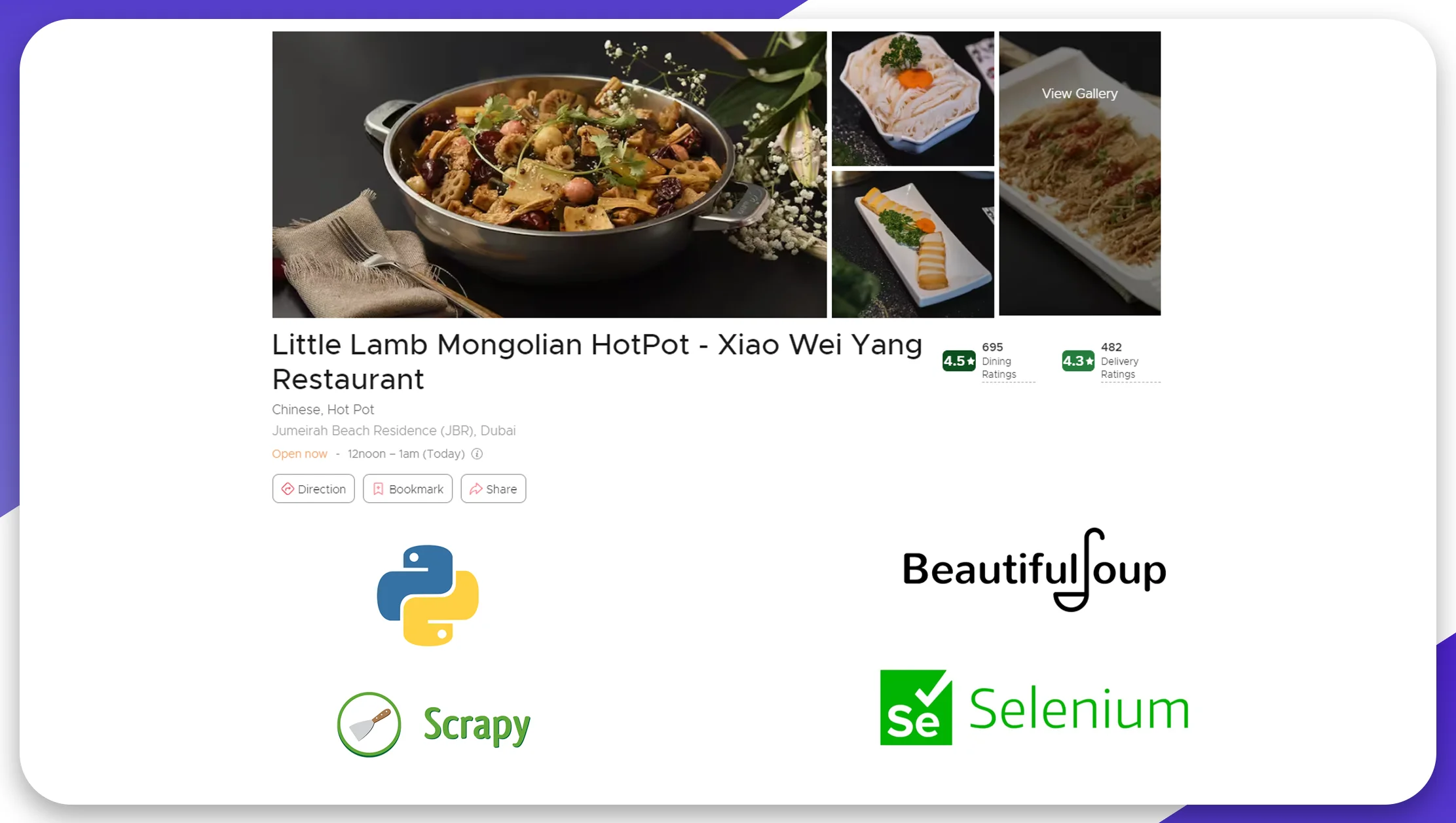
Tools and Libraries
To scrape food delivery data, you'll need the following tools and libraries:
Python: A versatile and widely-used programming language for web scraping.
BeautifulSoup: A library for parsing HTML and XML documents.
Scrapy: A powerful and flexible web scraping framework.
Selenium: A tool for automating web browsers, useful for scraping dynamic content.
Requests: A library for sending HTTP requests.
Setting Up Your Environment
Install Python: Make sure Python is installed on your system. You can download it from python.org.
Install Libraries: Use pip to install the necessary libraries:
pip install beautifulsoup4 scrapy selenium requestsBasic Example: Scraping Menu Data
Let's start with a simple example: scraping menu data from a hypothetical food delivery website.
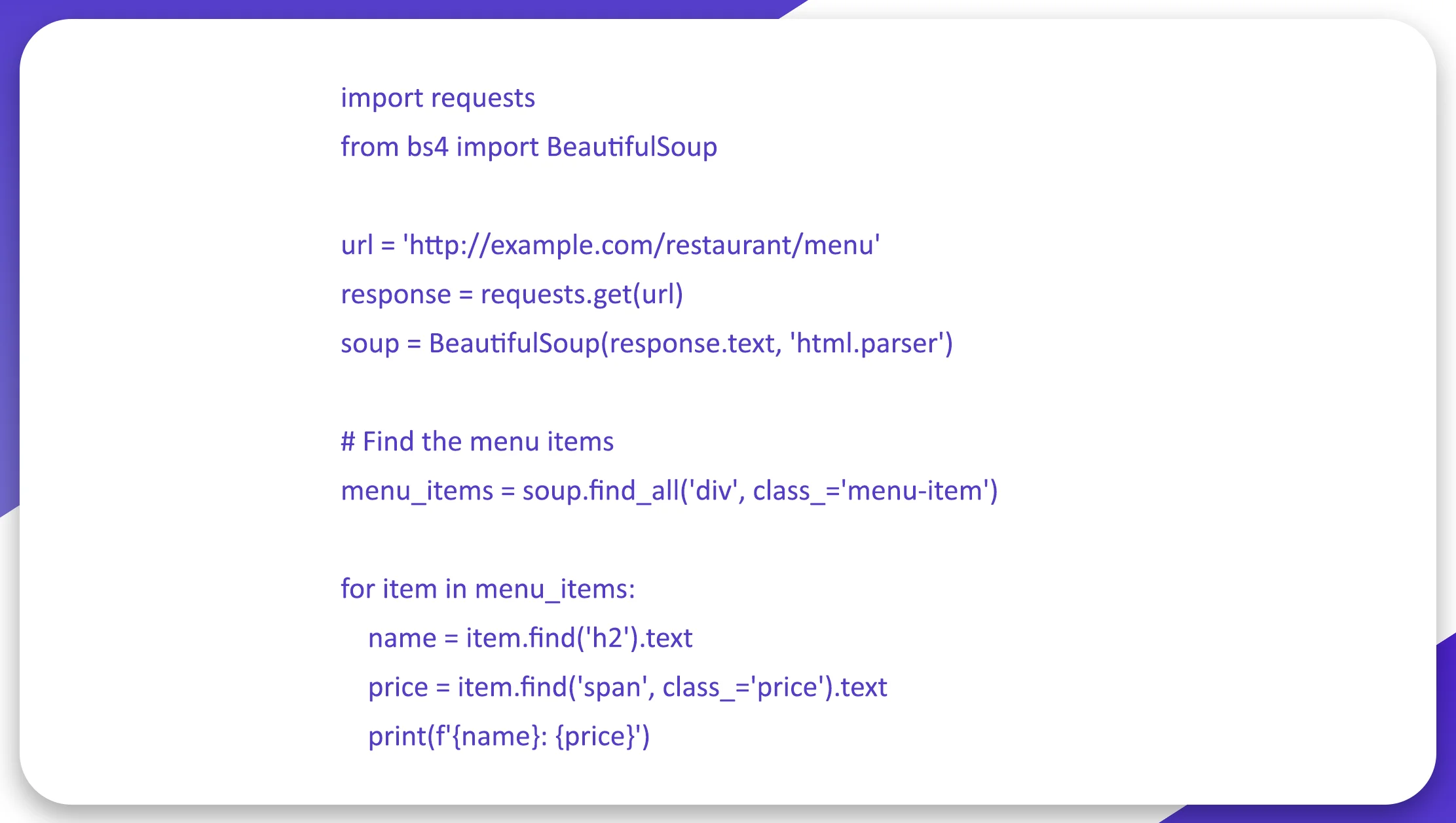
Advanced Techniques for Food Delivery Data Scraping
Handling Dynamic Content
Many modern websites load content dynamically using JavaScript. To scrape such sites, you can use Selenium.
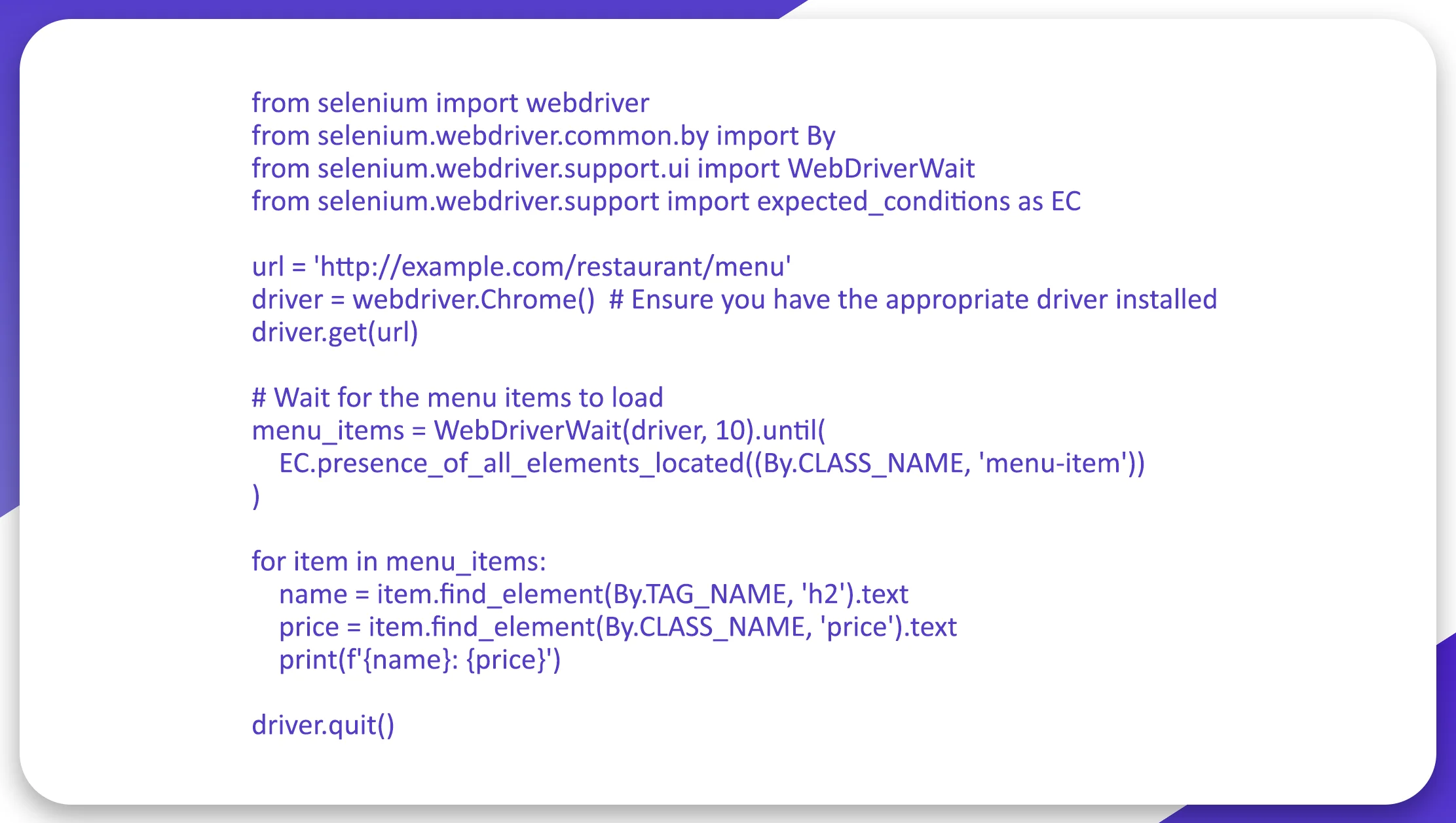
Extracting Structured Data with Scrapy
Scrapy is ideal for more complex scraping tasks, such as scraping multiple pages or following links.
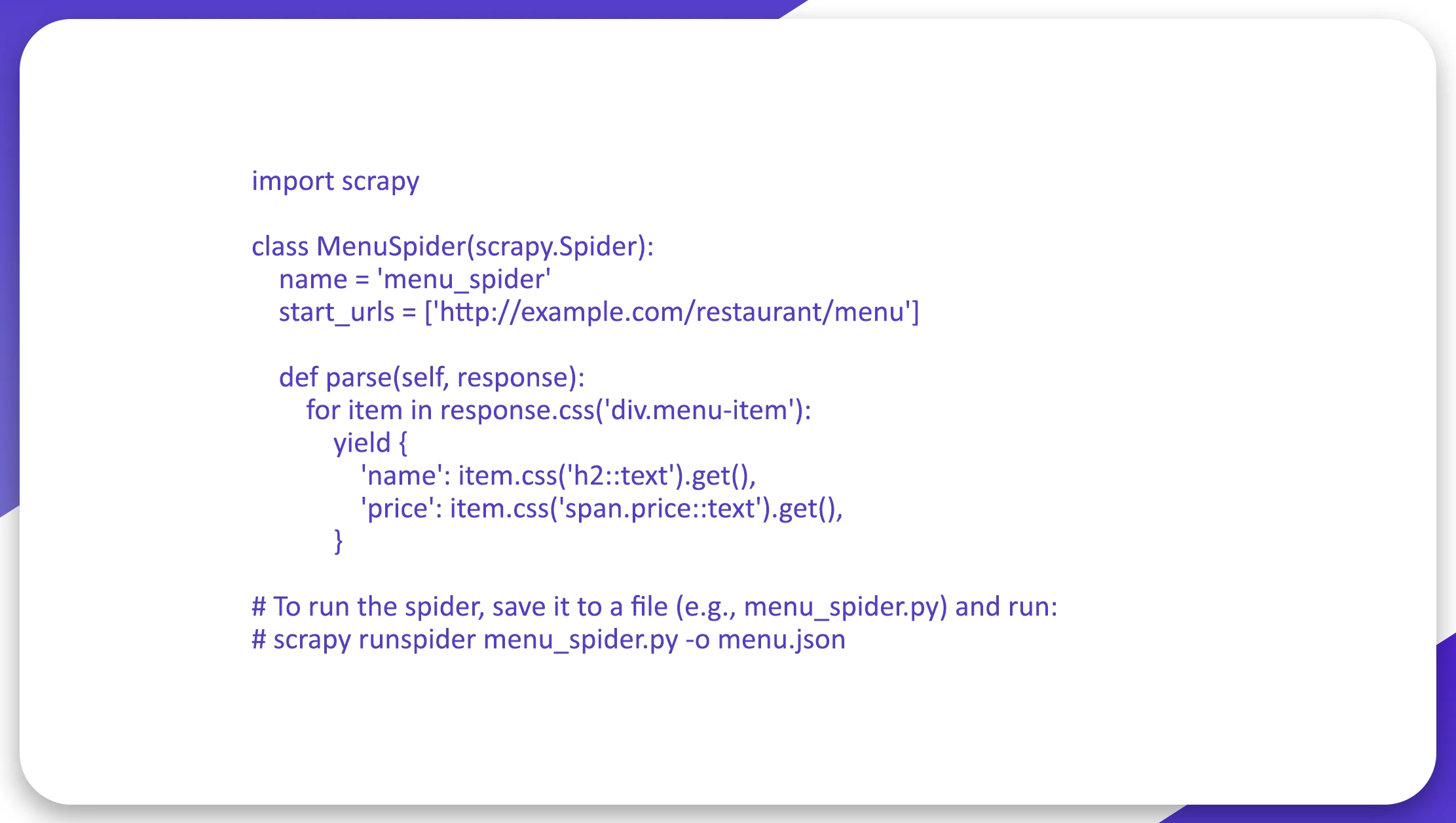
Storing and Analyzing Scraped Data
Once you have scraped the data, you need to store it for further analysis. Common storage options include:
CSV Files: Simple and easy to use with pandas for analysis.
Databases: Use SQLite, MySQL, or MongoDB for more complex data storage needs.
Cloud Storage: Store large datasets in cloud storage solutions like AWS S3.
Example: Storing Data in a CSV File
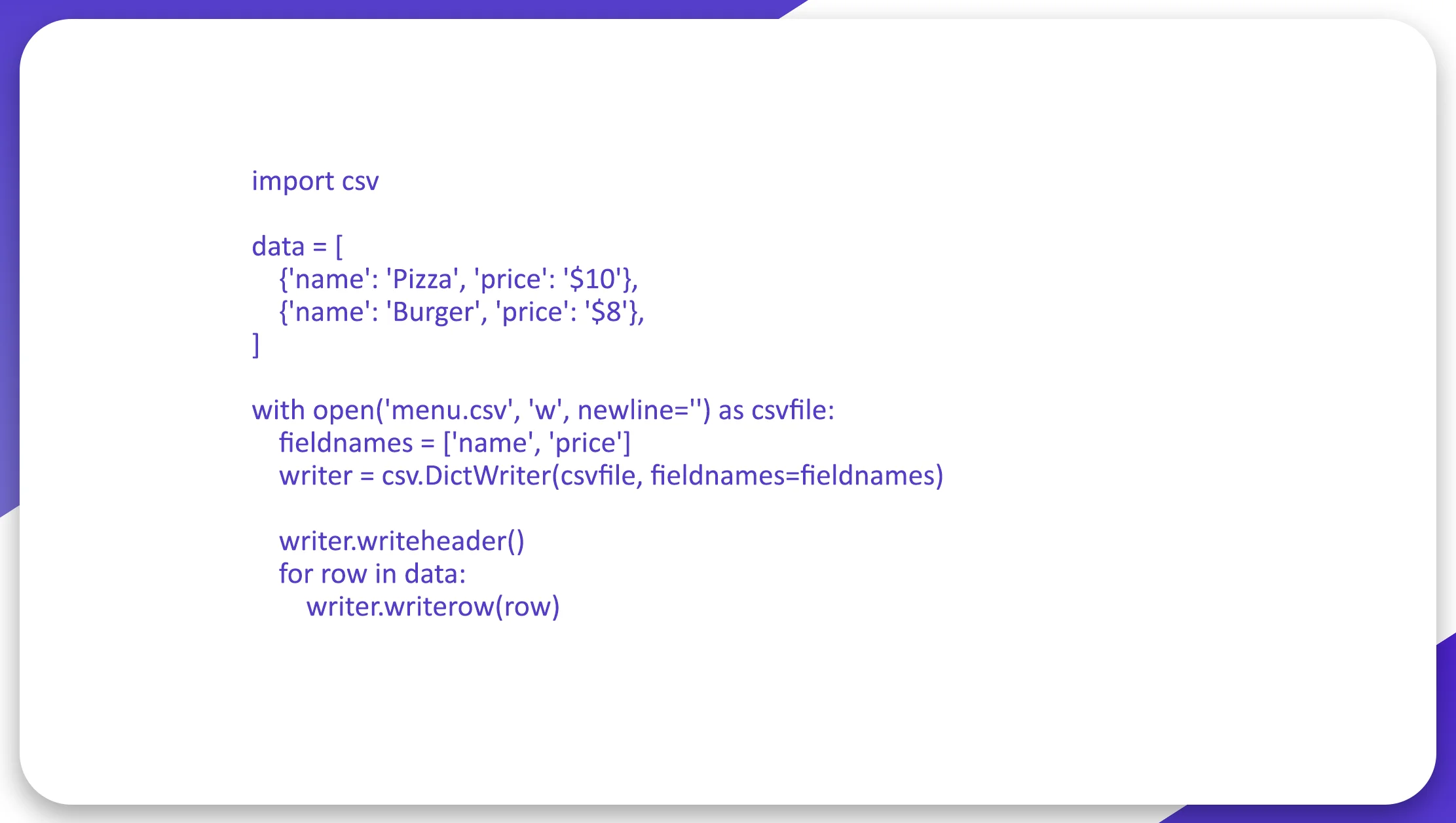
Conclusion
Web scraping food delivery data is a powerful technique that provides valuable insights for various applications. By leveraging advanced tools and techniques, you can efficiently collect and analyze data to inform your business decisions. Whether it's for market research, price comparison, or competitive analysis, the insights gained from food delivery data scraping can drive strategic, data-driven decision-making.
Real Data API offers robust web scraping services designed to streamline the process of food delivery data extraction. Our food delivery data scraper ensures accurate and comprehensive data collection, helping you stay ahead in the competitive market. Our instant data scraper provides real-time updates, enabling you to respond swiftly to market changes.














